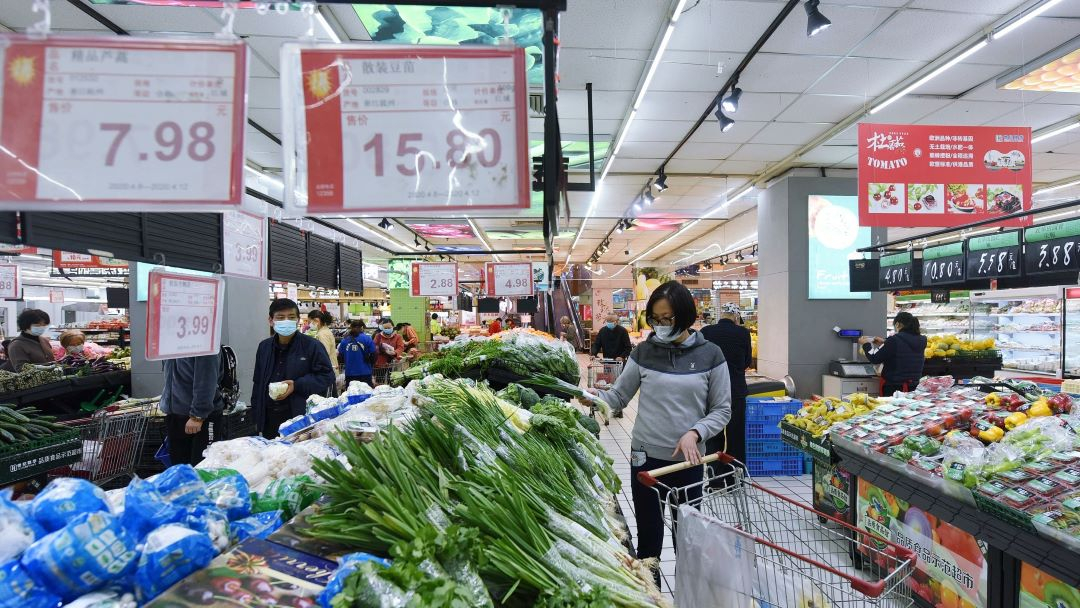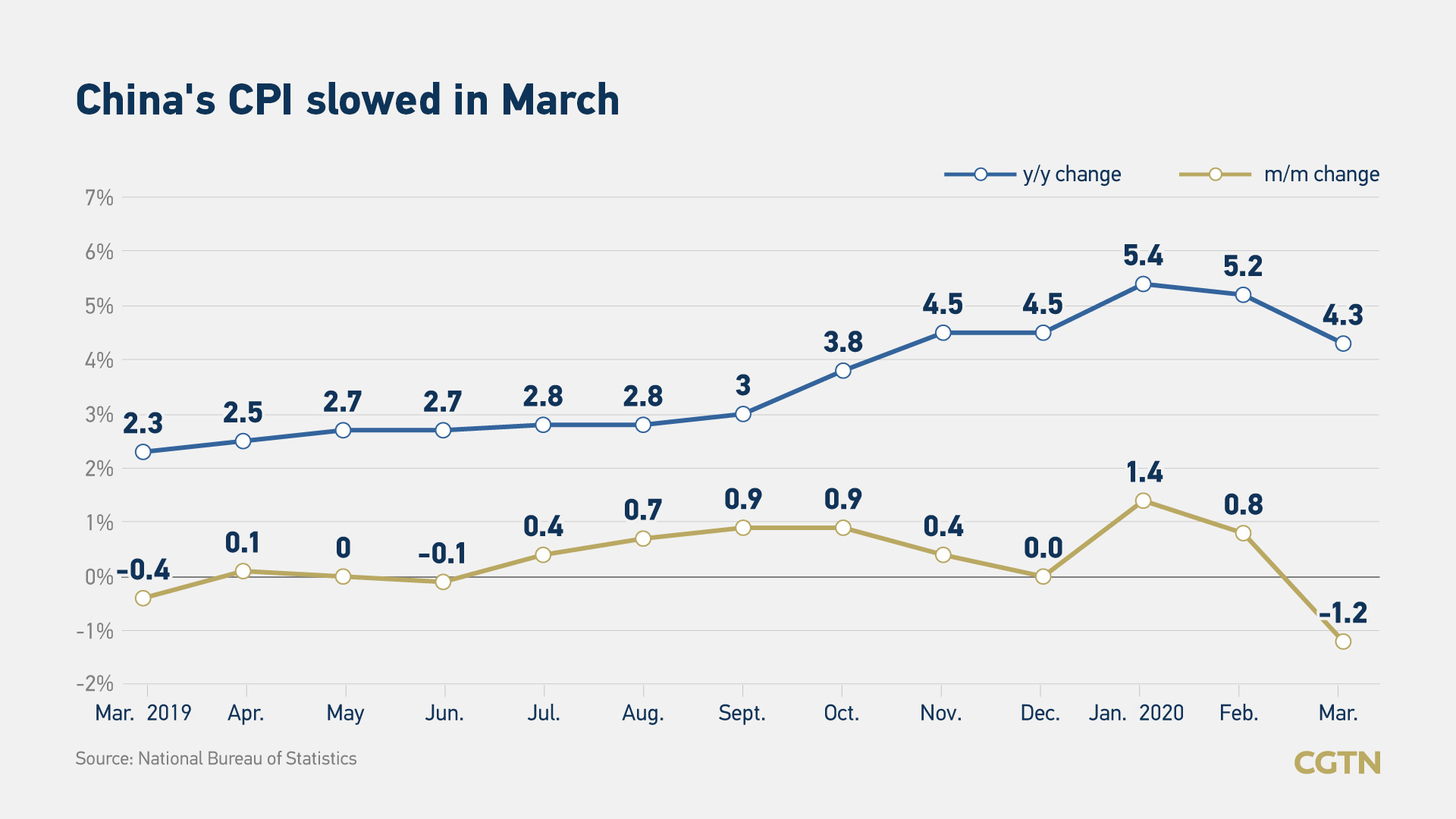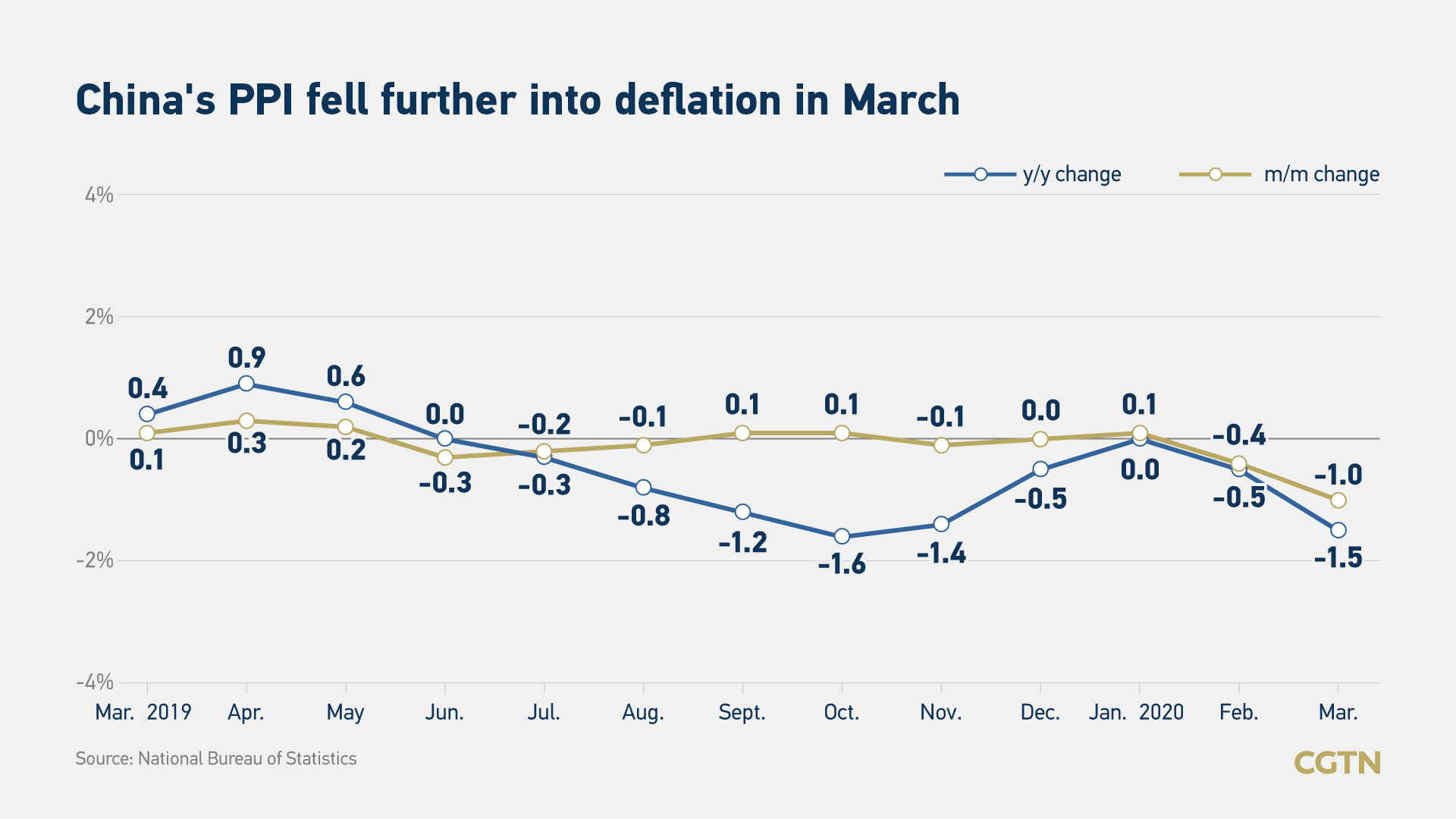
Customers buy vegetables in a supermarket in Hangzhou, China, April 10, 2020. /VCG
Customers buy vegetables in a supermarket in Hangzhou, China, April 10, 2020. /VCG
China's consumer price index (CPI), a main gauge of inflation, hit its slowest rate in March since October 2019, registering year-on-year rise of 4.3 percent, while edging down 0.9 percentage points from the previous month, data from the country's statistics authority showed on Friday.
China's producer price index (PPI) fell by 1.5 percent in March from a year earlier, affected by the declining commodity prices led by crude oil and weakening industrial demand, National Bureau of Statistics (NBS) data revealed.
CPI deceleration in March beat market expectations. Analysts polled by Bloomberg predicted a year-on-year increase of CPI in March would reach 4.9 percent, while PPI fared worse than the figure's previously estimated fall of 1.1 percent.
NBS senior statistician Dong Lijuan attributed the drop in China's recovery from the coronavirus shock, as production resumption accelerated in March along with the gradual recovery in transportation and logistics.

"The CPI growth rate in March was still relatively high, but has dropped considerably from February," said Zhang Xu, chief analyst for fixed Income from Everbright Securities in a note. "This reflects that the demand is still in the repairing period since being hit by the epidemic, and it will take some time to return to the previous level," he added.
China's CPI rose by 4.9 percent on average over the same period last year from January to March.
Food prices rose by 18.3 percent year-on-year in March; the rate of increase fell by 3.6 percentage points. Pork prices rose by 116.4 percent year-on-year, with a decrease of 18.8 percentage points.
CPI declined 1.2 percent from a rise of 0.8 percent in February. Data reflects that food price is the main factor driving the change, as it changed from a rise of 4.3 percent in February to a drop of 3.8 percent in March.
More seasonal vegetables have come onto the market as spring arrives, and in combination with the drop in logistics and transportation costs, vegetable prices fell by 12.2 percent in March, said Dong.
She continued that pork prices fell by 6.9 percent with the gradual inflow of live hogs into the market, resumption of work in slaughtering houses and the increasing the reserve meat supply in various provinces.
In the non-food category, affected by fluctuations in international crude oil prices, petrol prices fell by 9.7 percent in March.
China's PPI in March expanded its decline of 1.1 percentage points from last month, while hitting its low point since November last year. The price of means of production fell by 2.4 percent, a further drop by 1.4 percentage points from last month.

Among the major industries, oil and natural gas extraction sectors saw a further drop in prices by 21.7 percent, a decrease of 21.3 percentage points. Oil, coal and other fuel processing industries saw prices decrease by 10.6 percent, a decrease of 9.8 percentage points; chemical raw materials and the manufacturing industry saw prices edge down 5.3 percent, expanding the drop by one percentage point.
PPI fell by 0.6 percent from January to March on average, compared with the same period last year.
Zhang expected that PPI will be in a negative range throughout the second quarter. "The epidemic has caused a serious shortage of total demand. More policies need to be introduced in order to recover the fundamentals as soon as possible," he said.